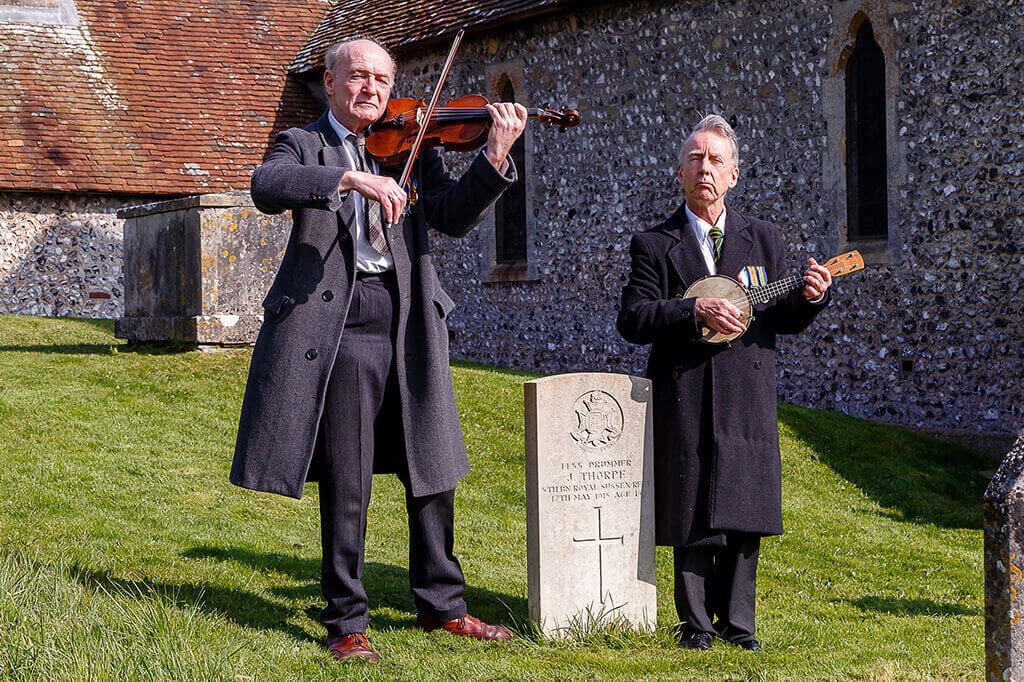Stony Broke in No Man’s Land is a new play written and directed by John Burrows for The Finborough Theatre’s The Great War 100 series. This series will run until 2018 with occasional productions of plays either written in or about the First World War to commemorate its centenary.
The play is a two-man double act which explores the difference between personal and public acts of mourning in the aftermath of the devastating conflict. The actors, dressed in shabby suits and great coats with medals pinned to their chest, play multiple parts to tell the story of an ordinary English Tommy who falls in love with a fraudulent spiritualist. The story spans 1916-20 and culminates in Lloyd George’s famous decision to hold a state funeral for an unknown soldier on 11 November 1920.
With only a couple of crates, a violin, a banjo and a small trestle table for props the actors excel themselves with their ability to create scenes and characters out of thin air. By striking an exaggerated pose or assuming a different posture they instantly become somebody new. As the story moves on the audience can differentiate between characters easily because the actors keep their hand gestures, accents and facial expressions consistently distinct for each character.
More than their ability to create a string of unique and believable characters is their ability to make these characters emotive. Brett’s hapless Tommy, Percy Cotton, is decent and loveable whilst his erstwhile fiancé, William’s spiritualist Nellie Motram, is cunning and selfish. She was young and sexy too, William’s committing wholeheartedly to her sassy pout so that he it makes easy for the audience to believe in what they are seeing.
Lady Elizabeth Munroe is one of the most brilliantly executed characters. Brett’s face and body shrinks into itself, hands clasped tightly together, whenever this bereaved aristocratic mother appears on stage. She is the victim of one of Nellie Motram’s scams, engaging her services to help her connect with a son who dies in battle in 1916. Her story echoes that of thousands but is particularly poignant because of her class and position in society which is totally meaningless in the face of her grief.
William’s also plays Lloyd George, who is depicted as a slightly idealised figure of the Welsh prime minister who led England to victory. The plot he hatches to dispel revolution in an economically struggling country still wrapped up in grief at the dawn of the 1920s is a procession to the cenotaph on what we now call remembrance Sunday. A coffin, holding the body of one unknown solider to represent thousands, is carried up through Whitehall for burial in Westminster Abbey. The story culminates in this procession, with all characters in the play involved in some way, their personal and private grief combined for a few short ceremonial moments.
A tiny hint of the sadness that must have been felt by those witnessing the procession is relived as William’s plays the last post, a tune that is now irrevocably linked in the national consciousness to the tumultuous events of the early 20th Century. Burrow’s original and understated play, consummately performed in this production, focuses on one story in millions to understand the bereavement of a whole country and the genesis of a national act of mourning that continues to this day.

